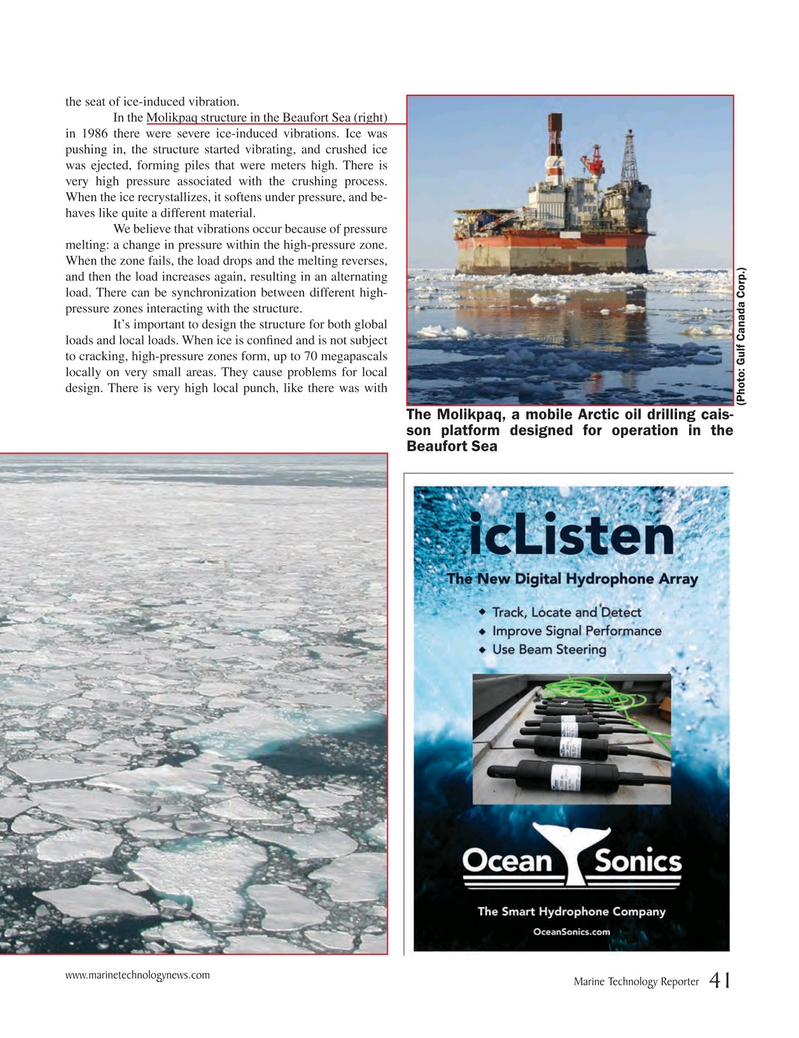
Page 41: of Marine Technology Magazine (October 2016)
AUV Operations
Read this page in Pdf, Flash or Html5 edition of October 2016 Marine Technology Magazine
the seat of ice-induced vibration. In the Molikpaq structure in the Beaufort Sea (right) in 1986 there were severe ice-induced vibrations. Ice was pushing in, the structure started vibrating, and crushed ice was ejected, forming piles that were meters high. There is very high pressure associated with the crushing process.
When the ice recrystallizes, it softens under pressure, and be- haves like quite a different material. We believe that vibrations occur because of pressure melting: a change in pressure within the high-pressure zone.
When the zone fails, the load drops and the melting reverses, and then the load increases again, resulting in an alternating load. There can be synchronization between different high- pressure zones interacting with the structure. It’s important to design the structure for both global loads and local loads. When ice is con? ned and is not subject to cracking, high-pressure zones form, up to 70 megapascals locally on very small areas. They cause problems for local design. There is very high local punch, like there was with (Photo: Gulf Canada Corp.)
The Molikpaq, a mobile Arctic oil drilling cais- son platform designed for operation in the
Beaufort Sea www.marinetechnologynews.com
Marine Technology Reporter 41
MTR #8 (34-49).indd 41 9/27/2016 2:50:14 PM

 40
40

 42
42
